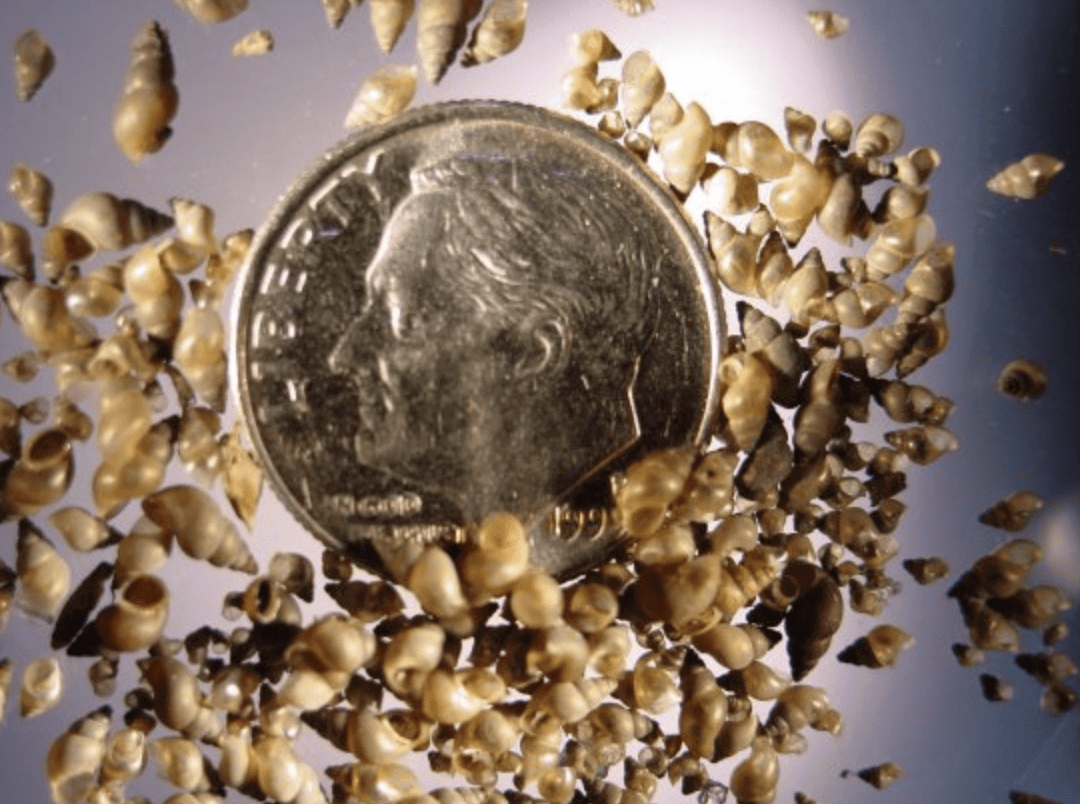The California Department of Fish and Wildlife (CDFW) and partners have confirmed the presence of New Zealand mudsnails (NZMS) at Warm Springs Fish Hatchery near Lake Sonoma. While NZMS have been detected in other portions of the watershed, this is the first confirmed detection at Warm Springs Hatchery.
NZMS were detected in an intake pipeline and an aeration pond during a regularly scheduled quarterly hatchery survey this summer. Since the detection, scientists have conducted surveys in about 75 percent of Coho-bearing streams in the watershed and have not observed NZMS presence beyond previously known locations. Warm Springs Hatchery operates production and release programs for Coho salmon (a federal and state-listed endangered species) and steelhead (federally listed threatened species). The NZMS surveys have focused on stocking locations for these fish species, which are conducted mostly in Russian River tributaries in the lower basin.
“The detection levels so far have not been alarming, but we want to do everything we can to minimize the spread,” said CDFW North Central Regional Manager Morgan Kilgour.
Dense populations of NZMS can displace and out-compete native species; they may consume up to half of the food resources in a stream and have been linked to reduced populations of aquatic insects, including mayflies, caddisflies, chironomids and other insects important to trout and salmon.
Invasive NZMS were first discovered in California in 2000 in the Owens River. It is believed that the species was introduced to western rivers through shipments of live sportfish, but subsequent spread is likely due to recreational activities. Dry Creek, which flows by Warm Springs Hatchery, has previously been identified as positive for NZMS. The source of the recent NZMS detections is unknown, but it is suspected that the snails came to the hatchery via its source water of Lake Sonoma.
The U.S. Army Corps of Engineers (USACE) operates the Russian River Coho Salmon Captive Broodstock Program at Warm Springs Fish Hatchery, and contracts with CDFW to operate its steelhead program. In addition to the surveys, CDFW has increased biosecurity measures at the hatchery.
The hatchery will continue to operate its Coho and steelhead programs. CDFW is working with USACE and the National Oceanic and Atmospheric Administration (NOAA), which permits the hatchery, to determine if any changes in Coho release protocols are needed given the detections.
“NOAA Fisheries fully supports CDFW and the USACE’s efforts to minimize the risk of further spread of aquatic invasive species such as NZMS within the Russian River and other watersheds that provide critical habitat for listed salmon and steelhead,” said Robert Coey, north central coast supervisor in NOAA Fisheries’ West Coast region.
Boaters, anglers and others who visit the Russian River watershed are asked to decontaminate equipment and follow the “clean, drain and dry” directive with all equipment used in the river:
If you wade, freeze waders and other gear overnight (at least six hours).
After leaving the water, inspect waders, boots, float tubes, boats and trailers or any gear used in the water.
Remove any visible snails with a stiff brush and follow with rinsing. If possible, freeze or completely dry out any wet gear.
Never transport live fish or other aquatic plants or animals from one waterbody to another.Additional information about stopping the spread of
NZMS can be found on CDFW’s California’s Invaders: New Zealand Mudsnail webpage.
Article courtesy of the California Department of Fish and Wildlife, photo by U.S. Geological Survey
Media Contact:
Steve Gonzalez, CDFW Communications, (916) 804-1714


